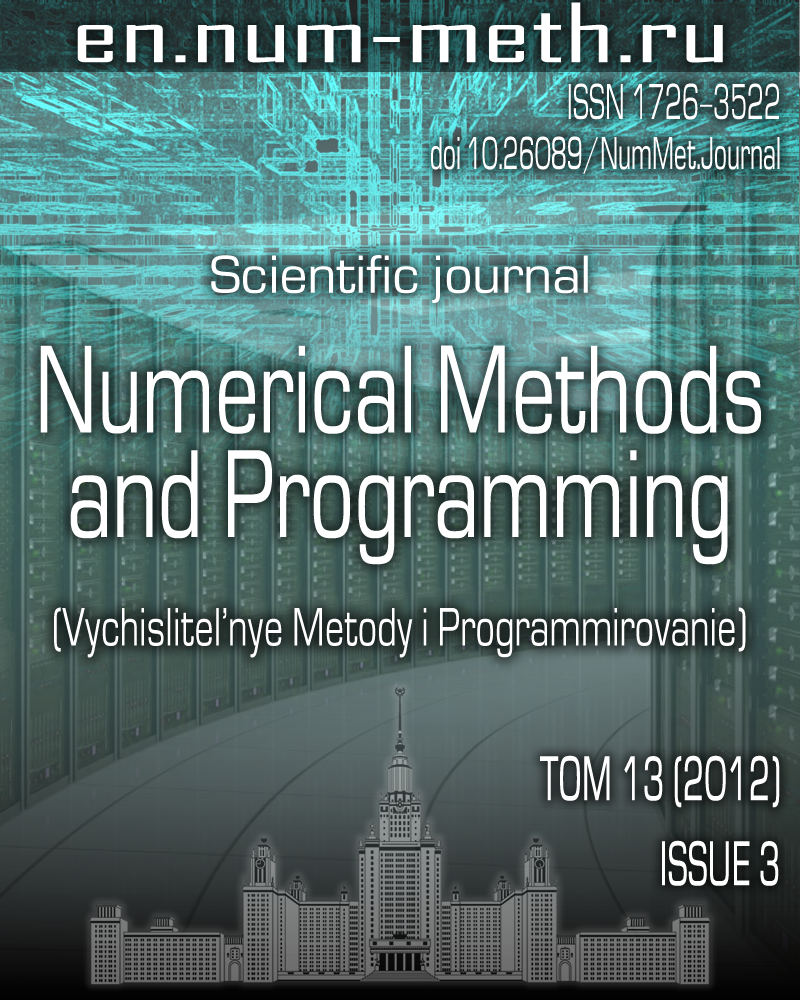Optimal Gaussian approximation in the Ising model
Keywords:
Abstract
The effect of spin fluctuations on the magnetic phase transition in the Ising model is studied. The calculation of basic characteristics is reduced to the integration over configurations of a stochastic (fluctuating) field. To evaluate the integrals, the optimal Gaussian approximation of the fluctuating field is constructed. An explicit expression for the system of nonlinear equations that defines the parameters of the optimal Gaussian approximation at each value of temperature is obtained. It is shown that, for weak interaction of spins, the temperature of the phase transition becomes smaller than that in the mean-field theory, but the phase transition remains second order. With an increase of interaction, the solution becomes nonunique at high temperatures and a jump first-order phase transition is observed. This work was supported in part by the Russian Foundation for Basic Research (grants nos. 10-01-96003р and 11-01-00795) and by the Ministry of Education and Science of the Russian Federation (program no. 1.1016.2011).
Published
Issue
Section
References
- Хуанг К. Статистическая механика. М.: Мир, 1966.
- Amit D.J. Field theory, the renormalization group, and critical phenomena. London: McGraw-Hill, 1978.
- Schwabl F. Statistical Mechanics. Berlin: Springer, 2006.
- Стратонович Р.Л. Об одном методе вычисления квантовых функций распределения // Докл. АН СССР. 1957. 115, № 6. 1097-1100.
- Hubbard J. Calculation of partition functions // Phys. Rev. Lett. 1959. 3, N 2. 77-78.
- Зинн-Жюстен Ж. Континуальный интеграл в квантовой механике. М.: Физматлит, 2006.
- Hertz J.A., Klenin M.A. Fluctuations in itinerant-electron paramagnets // Phys. Rev. B. 1974. 10, N 3. 1084-1096.
- Резер Б.И., Гребенников В.И. Температурная зависимость магнитных свойств ферромагнитных металлов с учетом динамики и нелокальности спиновых флуктуаций // Физика металлов и металловедение. 1998. 85, вып. 1. 30-42.
- Grebennikov V.I. A fluctuating field theory for systems of localized magnetic moments // Solid State Phenom. 2009. 152, 153. 563-566.
- Мельников Н.Б., Резер Б.И. Оптимальное гауссово приближение в теории флуктуирующего поля // Тр. Математич. института им. В. А. Стеклова РАН. 2010. 271. 159-180.
- Feynman R.P. Slow electrons in a polar crystal // Phys. Rev. 1955. 97. 660-665.
- Ортега Дж., Рейнболдт В. Итерационные методы решения нелинейных систем уравнений со многими неизвестными. М.: Мир, 1975.
- Шалашилин В.И., Кузнецов Е.Б. Метод продолжения по параметру и наилучшая параметризация (в прикладной математике и механике). М.: Эдиториал, 1999.
- Ашкрофт Н., Мермин Н. Физика твердого тела. 1. М.: Мир, 1979.
- Хорн Р., Джонсон Ч. Матричный анализ. М: Мир, 1989.
- Melnikov N.B., Reser B.I., Grebennikov V.I. Extended dynamic spin-fluctuation theory of metallic magnetism // J. Phys.: Condens. Matter. 2011. 23. 276003.
- Форсайт Дж., Малькольм М., Моулер К. Машинные методы математических вычислений. М.: Мир, 1980.
- Крылов В.И. Приближенное вычисление интегралов. М.: Наука, 1967.
- Reser B.I., Melnikov N.B. Problem of temperature dependence in the dynamic spin-fluctuation theory for strong ferromagnets // J. Phys.: Condens. Matter. 2008. 20. 285205.
- Melnikov N.B., Reser B.I. Instability analysis for the system of nonlinear equations of the dynamic spin-fluctuation theory // Proc. of the Fifth Int. Conf. on Dynamic Systems and Applications. Vol. 5. Atlanta: Dynamic Publishers, 2008. 312-316.
- Melnikov N.B., Reser B.I., Grebennikov V.I. Spin-fluctuation theory beyond Gaussian approximation // J. Phys. A: Math. Theor. 2010. 43. 195004.

